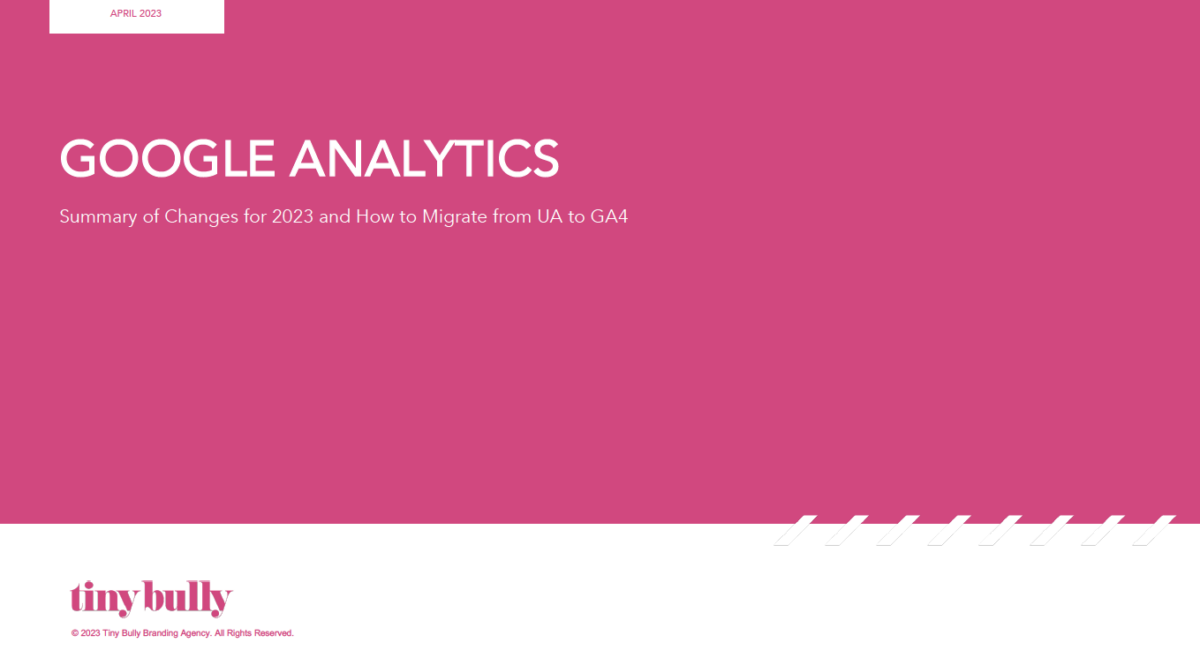Google Analytics (GA) is perhaps the most widely used web analytics tool, offering valuable insights into website traffic, user behavior, and marketing effectiveness.
However, as technology and online behavior evolve, so must analytics tools — and a couple of years back, Google announced its plan to sunset its Universal Analytics (UA) platform and migrate to Google Analytics 4 (GA4).
After a couple of timing pushbacks on Google’s behalf, the time for the migration is just about here.
Starting July 01, 2023, UA properties will no longer receive and analyze new user data. And while many marketers have already made (or have started to make) the transition to GA4, you can pretty much bet on the fact that many GA users will be scrambling over the next couple of months to make sure everything is in order with all their website tracking efforts.
If you’re not already familiar with GA4, here’s a quick refresher from Google itself.
GA4 is a new kind of property designed for the future of measurement:
• Collects both website and app data to better understand the customer journey
• Uses event-based data instead of session-based
• Includes privacy controls such as cookieless measurement, and behavioral and conversion modeling
• Predictive capabilities offer guidance without complex models
• Direct integrations to media platforms help drive actions on your website or app
Learn More: Introducing the next generation of Analytics, Google Analytics 4
Google Analytics 4 vs. Universal Analytics
The long-time “standard” Google Analytics property, Universal Analytics, launched in the mid-2000s for a generation of online measurement that was anchored in the desktop web, independent sessions, and more easily observable data from cookies. However, with the rise of mobile over the last decade, an increased focus on consumer privacy, and emerging technologies such as IoT (Internet of Things), UA found itself becoming obsolete.
GA4 is essentially Google’s response to these evolving needs.
Built upon the foundation of the App + Web property introduced in 2019, GA4 offers a more comprehensive and unified view of user interactions across multiple platforms, including websites, mobile apps, and even offline data sources. This expanded scope allows businesses to gain deeper insights into customer journeys and engagement across the entire digital ecosystem.
GA4 offers a more streamlined and flexible approach to analytics, making it easier for businesses to track user journeys, measure conversions, and gain insights into user behavior. It also offers new features such as enhanced cross-device tracking, machine learning-powered insights, and a more flexible tagging system.
Now is the time to migrate to Google Analytics 4
If you’re still solely using UA, it’s essential to start planning — now — for the migration to GA4.
Google has provided resources and documentation to help businesses make the transition. And depending on your setup and custom business needs, the migration process may take some time. It’s critically important to ensure that your tracking is set up correctly in GA4 to avoid data discrepancies.
To help our clients navigate the changing landscape when it comes to Google Analytics, Tiny Bully has prepared a helpful PDF guide — Google Analytics 2023 Updates.
Not only does it provide an overview of what all of this means, but it also outlines the steps marketers should take now to prepare for the changes ahead and ensure they’re all set up with GA4 by the time July rolls around.
How to Migrate to Google Analytics 4
The sunsetting of UA is very significant for marketers and brands of all stripes, and the migration to GA4 is an opportunity for businesses to gain deeper insights into user behavior and improve their marketing strategies.
But, the transition may require some adjustments, however, with the right planning and resources, it can be a smooth process.
So be sure to grab our guide and get working on making Google Analytics work for you. And if you need help or just want to chat more about it, we’re here. Let us know what you think!

